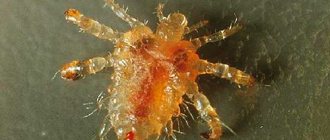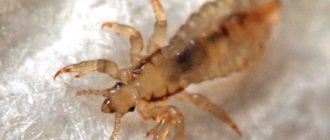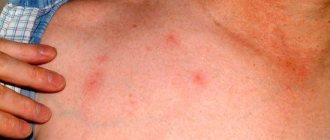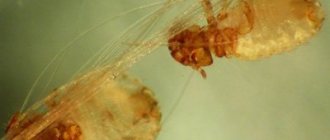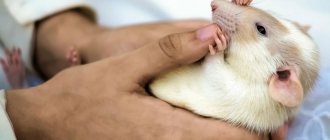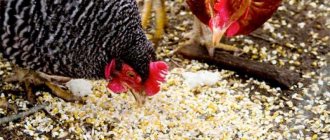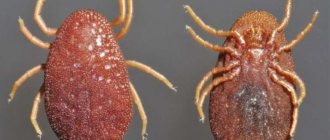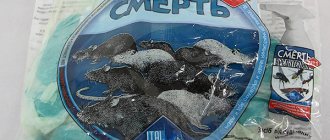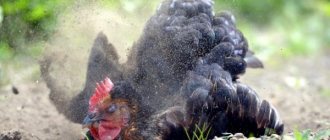One of the common health problems in poultry is parasites in chickens. They can be divided into two groups: internal, which operate in the intestines and other internal organs, and external, living on the skin. Some parasitic diseases are transmitted to humans, which means you need to get rid of them as soon as possible. Every farmer should know how to detect parasites and how to deal with them.
Chicken breeding
How dangerous are parasites for chickens?
All types of parasites are dangerous - they weaken the immune system of birds and cause exhaustion of the body, which leads not only to a decrease in productivity, but sometimes to the death of birds. Ticks, bedbugs and fleas, which feed on the blood and skin particles of birds, often act as carriers of infectious diseases. If just one individual becomes infected, the virus will infect everyone else.
Internal parasites, helminths and protozoa are also very dangerous, not only for chickens, but also for people. They poison the body of birds with toxins, take away their nutrients, and disrupt the functioning of their internal organs. Some types of helminthiases lead to blockage or even rupture of the intestines.
Attention! Parasitic diseases are contagious. Chickens and individuals with weakened immune systems are at risk.
Prevention: how to prevent fleas from appearing
- Pests love warmth, humidity and dirt, so the chicken coop must be regularly ventilated, as well as cleaned out dirt and debris, and removed waste products from the chicken coop. Cleanliness will preserve the chickens' immunity; they will be able to resist not only parasites, but also diseases.
- Try to prevent your birds from coming into contact with wild birds and rodents, which can be carriers of the infection.
- When purchasing new individuals, be sure to check them for the presence of ectoparasites before adding them to the chicken coop.
- Inspect your chickens periodically; if signs of infestation are detected, immediately take measures to destroy the pests to prevent their spread.
- You can place a bowl of ash or an ash-sand mixture in the chicken coop so that the birds can keep themselves clean.
- Carry out prevention regularly using folk or chemical remedies. After all, it is always easier to prevent an attack than to fight it later.
External parasites affecting chickens
The most common ectoparasites of chickens are fluff eaters, bugs and mites. Each of the species is easily transmitted from a sick laying hen to a healthy one through bedding, equipment, and direct contact. Let's look at how these living organisms differ from each other and how to detect their presence in the chicken coop.
Down-eaters
These are representatives of the order of malophages. Their body length does not exceed 2 mm, the color is predominantly dark brown. The head of adults is slightly wider than the thoracic region. Pere eaters do not feed on blood, like human lice, but on feather fibers. Despite this, affected chickens experience discomfort. The fact is that when moving through the feathers of birds, lice eaters cling to the surface layer of the skin, thereby causing itching.
Chicken lice eaters are constantly on the host’s body. They reproduce very quickly - each female lays from 20 to 60 eggs during her life. Infection with mallophagosis occurs through physical contact of a sick individual with a healthy one, as well as through bedding and equipment. A person can accidentally introduce insects into the chicken coop on his clothes.
Symptoms of mallophagosis infection:
- anxiety, self-pecking;
- exhaustion;
- decreased productivity in laying hens;
- loss of feathers, bare areas of skin with signs of inflammation.
Reference. Down feather eaters can be seen with the naked eye by spreading the feathers to the sides. Outwardly, they resemble human lice.
Ticks
Chickens are affected by several types of mites. The most common are scabies, chin and red chicken.
Scabies mite in chickens
The scabies mite causes the disease knemidocoptic mange. The ectoparasite penetrates the skin of birds mainly on the paws. It feeds on fragments of the epidermis and lymphatic fluid. In advanced cases, scabies mites affect the area under the wings and neck of laying hens.
Symptoms of knemidocoptosis:
- rough skin on the paws;
- exhaustion;
- restlessness, finger pecking;
- the appearance of growths or bumps on the limbs.
Another type of mite, the red chicken mite, differs from scabies in that it is not constantly located on the body of its victim. It breeds in the litter, in the cracks between the boards, in secluded corners of the poultry house, and feeds at night, attacking birds.
The red chicken mite is easy to spot on chickens. Insects attach to the comb, the area around the eyes and the skin of the paws, to places where blood vessels are close. Having drunk blood, ticks increase slightly in size and acquire a dark color.
The main sign of the presence of ectoparasites in a chicken coop is the reluctance of chickens to return to the coop in the evening. Infection is indicated by self-pecking and exhaustion of laying hens, as well as a decrease in egg production.
The third type of skin parasites is syringophilus or feather mites. They get their name because they live inside the shafts of feathers. Syringophilosis affects birds that have reached the age of six months.
Signs of infection:
- feather fragility;
- the appearance of bare skin;
- self-pecking;
- dark spots at the base of the feather shaft.
Bedbugs
Pigeon bugs and bedbugs also attack chicken coop occupants. Externally, these parasites are similar - they have a body flattened in the horizontal plane and a brown color. During the daytime, bedbugs hide in secluded places, and at night they come out to hunt. They are attracted to the heat generated by birds. Female parasites drink the blood of their victims.
Symptoms of bedbug infestation:
- laying hen anxiety;
- self-pecking;
- Bites are found on areas of the body not covered with feathers.
Where do fleas come from in a chicken coop?
Accumulations of debris and dirt are suitable conditions for fleas to breed. Untimely removal of droppings, dirty bedding, old food - all this contributes to the spread of pests, and in such living conditions, chickens' immunity is reduced, which leads to various diseases.
- The most common ways insects get into a chicken coop are as follows.
- Adding infected individuals to the chicken coop. Sometimes unscrupulous poultry farmers can sell birds with parasites. Therefore, when purchasing chicks, you must check them.
- With the help of a person. A person himself can bring pests from other farms or subsidiary plots on his clothes.
- With bedding. New bedding, such as straw, can also harbor fleas, which then move onto the chickens.
- From wild birds. Wild birds, such as pigeons or sparrows, can also carry fleas. They can also cause chicken fleas to appear in an apartment.
Methods of treating chickens for fleas, bedbugs and ticks
The fight against ectoparasites begins immediately. Insectoacaricidal sprays, drops and ointments are used to treat laying hens:
Ectosan powder
- Ektosan or Ektosan powder;
- Extrasol M;
- Paravet;
- Insectin;
- aversectin ointment.
Attention! The dosage should be prescribed by a veterinarian, taking into account the weight of the birds. Chickens are treated twice with an interval of 7–10 days.
If ticks, fleas and bedbugs are found in laying hens, it is necessary to disinfest the chicken coop. The old bedding is removed, then all equipment is thoroughly washed. Floors and walls are treated using solutions of insectoacaricides, for example Ivermek ON, paying special attention to hard-to-reach places.
Sulfur bomb is effective in the fight against external parasites, but this remedy can only be used in the absence of chickens. The metal parts of the chicken coop structure are burned with a blowtorch. To prevent the appearance of mites and chicken lice, a bath with sand and wood ash is installed in the poultry house.
Description of the pest
Appearance
The chicken parasite is very similar in appearance to dog or cat fleas. Although biologically these are different species. The body of this pest, unlike other species, is flattened on both sides and divided into three parts: a head with two eyes and a pair of antennae, a thoracic region where three pairs of legs are located, and a large abdomen. Typically the insect is brown or black in color, depending on the species. The body is covered with a dense chitinous cover; on the surface of the cover there are irregularities and hairs, with the help of which the flea is attached to the feathers. The oral apparatus has a piercing-sucking structure. The hind pair of legs is highly developed, which allows fleas to push off and jump over vast distances, so the insect can make a jump of up to 1.5 m in length.
Varieties of chicken fleas
In total, there are more than 2 thousand different types of fleas. There are mainly two species that live on poultry.
- Chicken flea. Slightly larger than the black flea, reaching a length of 2-2.5 mm. The body is brown. The most common type of flea on poultry. Can attack humans and animals. It is believed that the pest initially appeared on tits, and only then settled on poultry. Unlike other species, it does not require a blood meal before mating.
- Black flea. It reaches 1.5 mm in length, the body is black. Most often lives in excrement. Capable of biting mammals and humans.
Features of reproduction and lifestyle
These parasites are quite heat-loving; temperatures around 40 degrees are most comfortable for them. Exactly what temperature is maintained under the feathers of chickens, allowing insects to live and reproduce in comfort. Also, good conditions for the development of parasites include high humidity, lack of ventilation, and accumulation of dirt and debris. Fleas feed on the blood of the victim, choosing areas of the body where the skin is especially thin and blood vessels are located close to the skin. These parasites, unlike ticks, do not inject an anesthetic into the blood, so their bites are very painful, which is why the insects greatly annoy poultry.
Chicken flea
The female lays eggs daily, pushing them out of her abdomen while jumping. Thanks to this, the eggs scatter throughout the chicken coop. Especially a lot of them accumulate in nests. In this way, a female can lay up to 40 eggs per day. The eggs are microscopic white oval grains. After about a week, the eggs hatch into worm-like larvae. They live mainly in nests and litter, feeding on excrement, leftover bird food, and skin particles. The larvae are afraid of light, so they hide in dark, secluded places. In this way, the larvae exist for 7-10 days, then they entangle themselves in a web, turning into a pupa. Pests remain in the pupal state until they find a suitable victim. This stage can last up to several months. Once on the victim, the pupa turns into an imago. In the adult stage, the insect lives from 2 to 12 months.
Diseases caused by internal parasites - worms and protozoa
The main causes of infection of chickens with internal parasites and helminths are the eating of earthworms, beetles, flies, dragonflies, slugs, the bodies of which often contain eggs or larvae of worms. Birds also become infected through dirty drinking water, contaminated food, and bedding.
Attention! Parasites in a chicken coop quickly spread from sick individuals to healthy ones, since helminth eggs are excreted in the droppings and remain in the litter for a long time.
Capillariasis
This disease is caused by capillary threadworms. They live in the small intestine, attaching to the intestinal mucosa. Infection occurs by eating earthworms, as well as through the droppings of sick individuals, with which helminth eggs are released. The incubation period lasts from 9 to 20 days.
Signs of capillariasis:
- diarrhea;
- loss of appetite;
- decreased body weight and stunted growth in chickens;
- low activity;
- shiver.
Capillaries are especially dangerous for young animals. Chickens may die due to exhaustion and intoxication of the body.
Ascariasis
Roundworms are light yellow worms 3–12 cm long. Their habitat is the small intestine. Birds are infected through the nutritional route, that is, through food and water. Intensive reproduction of nematodes leads to hemorrhages and inflammation in the intestines. The accumulation of worms sometimes leads to blockage of the intestinal lumen and even to their rupture.
Poultry parasites
Young chickens are most susceptible to ascariasis and have a hard time bearing it. Signs of the disease are similar to those of other types of helminthiases:
- lethargy, loss of appetite;
- indigestion, diarrhea;
- later the scallop becomes pale;
- growth retardation in chicks and weight loss in adult chickens;
- laying hens show a decrease in productivity.
Cestodosis
Cestodes are tapeworms. Several types of cestodes parasitize the body of chickens. Depending on the species, the size of the worms can range from 0.5 mm to 25 cm. Cestodes have intermediate hosts, which are beetles, earthworms, flies, and slugs. When eating insects, chickens swallow cysticercoids - cestode larvae. They then develop in the body of birds.
Symptoms of the introduction of parasites in chickens appear as follows:
- diarrhea with mucus and blood;
- sometimes worm segments are found in the droppings;
- disheveled appearance, apathy;
- weight loss despite good appetite;
- thirst;
- with severe infestation, convulsive seizures occur.
Prostagonymosis
Trematodes of the genus Prostagonimus are dangerous parasites of chickens and other birds that have two intermediate hosts - mollusks and dragonflies. Dragonfly larvae, inside which invasive matacircariae develop, enter the digestive tract of laying hens and chicks, and from there into the oviduct or bursa of Fabricius (in chicks).
The disease goes through 3 stages. The first sign of prostagonymosis is that chickens lay eggs with soft shells or without them at all. Subsequently, masonry stops completely. After about a month, the second stage of the disease begins, during which the condition of the birds noticeably worsens. Chickens move little, lose weight, sit in nests for a long time, but do not lay eggs. A light, thick liquid oozes from the cloaca, and the abdomen increases in size. The gait also changes - laying hens walk with their butts protruding, like ducks.
The third stage is characterized by increased body temperature, loss of appetite and severe thirst. Among other things, the cloaca protrudes, and the feathers around it and on the belly fall out. If left untreated, the birds die within a few days.
Coccidiosis
Eimeria tenella is a parasite that causes coccidiosis in chickens. Broilers are more susceptible to this disease. The insidiousness of the disease is that while coccidiosis is hidden, sick chickens are already spreading the infection in the poultry house - eimeria are excreted in their droppings.
In chickens, the disease is acute and is accompanied by symptoms:
- loss of appetite;
- lethargy;
- disheveled appearance;
- drooping wings;
- thirst;
- bluishness of the scallop;
- diarrhea with mucus and bloody inclusions;
- convulsions and paralysis (in subacute cases).
Chicks die from coccidiosis 3–4 days after the first signs of the disease appear. When opening carcasses, glove-like appendages are found on the intestines of chickens.
Histomoniasis
Histomonads are protozoan single-celled parasites of chickens. The pathogens enter the stomach along with the food, then from there into the intestines and liver, where they multiply. As a result of the activity of histomonas, a number of disturbances in the functioning of the body occur - peritonitis develops, toxins penetrate into the bloodstream, and the absorption of nutrients slows down.
Symptoms:
- decreased physical activity;
- loss of appetite;
- unsteady gait;
- liquid droppings of brown-green color with a pungent odor;
- blackening of the scalp;
- decrease in body temperature by 1 or 2 degrees;
- infected chickens huddle together and sit with their eyes closed;
- Within a week, exhaustion is observed.
Parasitic diseases
Parasitic diseases occur as a result of the presence of parasites on the body or internal organs of chickens. When one individual is infected, the disease can spread to the entire chicken coop. Not only the birds will suffer, but also the person who cares for them. After all, some diseases are transmitted from birds to humans. The main thing is to identify the problem in a timely manner and begin treatment.
Syringophilosis
Feather mange is caused by a mite that penetrates deeply into the base of the feather and becomes parasitic. The disease appears more often during warm periods. A healthy individual becomes infected from a sick chicken through the slit-like channel of the feather. Incubation time is 80-90 days. Scabies affects individuals 5-6 months old.
Signs:
- feathers break and fall out;
- a chicken pecks its own body;
- the skin turns red and inflamed;
- the disease spreads to areas of the back;
- earrings and comb turn pale;
- anemia;
- decreased productivity.
Knemidocoptosis
Roosters get sick more often than chickens. The acariform mite lives on the paws under the skin. It feeds on skin particles and lymphatic fluid. The skin thickens and turns white, and bumps appear. The disease is popularly called “calcareous foot.” Advanced disease leads to necrosis of the fingers. The tick can also infect the neck and wings.
Capillariasis
The causative agent is threadworms that live in the intestines. The last stage of the disease cannot be treated, the individual dies. The disease causes lethargy, developmental delays, and refusal to eat.
Ascariasis
Poultry are infected with roundworms when a chicken ingests helminth eggs. They settle in the intestinal tract. With the disease, the number of eggs laid decreases, exhaustion occurs, and appetite decreases.
Syngamosis
Singams attack the respiratory system. The chicken wheezes, refuses to eat, and loses weight.
Cestodosis
The disease is caused by tapeworms. They inhabit the stomach and intestines. The owner of the worms loses his appetite, becomes weak and lethargic, and experiences convulsions.
Interesting!
One female helminth hatches up to 50 million eggs per year. The taste of chicken meat deteriorates if the chicken is contaminated.
Prostagonymosis
The flat fluke lives in the cecum and rectum, sometimes in the oviduct. The eggshell becomes thinner or absent altogether. The chicken's belly swells, weakness.
Histomoniasis
Histomonas parasitize the liver or cecum. The birds develop apathy and rarely have yellow stools.
Heteracidosis
Heterakis are located in the cecum. There is a loss of strength, refusal to feed, diarrhea, and decreased egg production.
Amidostomiasis
Amidostomas live in the stomach, they affect the cuticles of the muscular section. The chicken refuses to eat, apathy occurs, and the young grow poorly.
Coccidiosis
Coccidia live in bird livers. Severe diarrhea occurs, weight decreases, and hens stop laying eggs.
Treatment of helminthic infestations in chickens
When the diagnosis of helminthiasis in chickens is confirmed, treatment begins immediately. Moreover, medications are given to all birds, including apparently healthy ones.
Ascariasis and capillariasis are treated with anthelmintic drugs:
Pirantel
- Pyrantel;
- Piperazine;
- Febtal.
The dosage is indicated in the instructions for 10 kg of live weight. The duration of the course with different drugs is 1–3 days. After 2 weeks the medicine is given again.
To treat prostagonymosis, hexachloroethane is used in a dosage of 0.2–0.5 ml per head for three days or carbon tetrachloride. The solution is injected into the goiter using a thin rubber tube, 2–5 ml each. After taking medications, helminths will begin to emerge from the oviduct. The cleansing process takes 3–5 days.
Treatment of histomoniasis is carried out with Metronidazole or Trichopolum together with anthelmintic drugs. Filixan is used for infection with different types of cestodes. Dosage – 0.3 g per head once a day for 3 days.
Coccidiosis is treated with coccidiostats - Avatek, Aviax, Koktsistak, and chickens are also treated with Baytril or Amprolium. Eimeria quickly develop resistance to drugs, so it is necessary to use drugs with different active ingredients.
After deworming the livestock, the old litter is burned, and the chicken coop and equipment are disinfected.
Disinfection of the chicken coop
Cleaning of the chicken room is done once a year. If infection occurs, all birds are temporarily transferred to another room.
- Shoes are washed before entering the room.
- The walls of the chicken coop are covered with lime.
- All food and droppings are removed and burned.
- Walls and floors are washed with apple cider vinegar solution.
- Treat walls, floors, cracks with Formalin, Virocide, Glutex, bleach. Dust is used for the same purposes. All products are toxic, so wear gloves and a face mask.
Substances for spraying
Neocidol 5% is sprayed on the surface, in the cracks. No need to rinse off. For 50 sq. m. 2.5 l of solution.
Chlorophos 2%, 200 g of substance per bucket of water. Stir thoroughly and spray on the walls and floor. After a day, wash it off.
Delta Zone is designed against bedbugs. Per liter of water 5 ml of product.
Agran is used to kill bedbugs. 5 ml of product per 500 ml of water. When the surfaces are dry, the chicken coop is ventilated. The drug acts gradually.
Attention!
All substances are toxic, they should not get into poultry feed, and after treatment, do not house chickens for more than a day.
Prevention of parasite infestation
Farmers understand how important it is to pay attention to the prevention of parasitic infections in chickens. To keep your birds healthy you need to:
- regularly disinfect the poultry house and equipment;
- change the litter;
- monitor the quality of feed and the purity of drinking water;
- quarantine chickens newly arrived at the poultry farm;
- limit access of laying hens and chicks to bodies of water;
- do not let birds out for a walk after rain - at this time earthworms, carriers of helminths, appear on the ground;
- inspect the livestock for infestation with ticks and feather eaters;
- At the first sign of parasites in chickens, contact a veterinarian and begin treatment.
Skin and internal parasites are a serious problem in poultry. Infected individuals spread diseases, which can lead to the death of young animals and reduced productivity in laying hens. In addition, helminthic infestations are dangerous for humans. In this regard, timely diagnosis is very important. If you discover alarming symptoms of parasite infection in one or more birds, treatment should not be delayed. The sick individual is immediately removed. Following the veterinarian's recommendations will help solve the problem and save the livestock.
If traditional methods do not help
When the scale of the damage is too great, folk remedies are no longer enough. We have to use chemicals. Please note that veterinary advice is required. Before using drugs from the chicken coop, it is necessary to remove old bedding, droppings, and clean all places where there may be accumulations of insects.
The drugs are available in various forms: drops, sprays, injections, concentrates, powders. Sometimes pet products help. The most common drugs are the following.
Sprays and aerosols
Spray the skin and feathers to make them moist. If necessary, the procedure can be repeated.
- Hartz. Typically used on dogs and cats, but effective against chicken species of ectoparasites. Effective for a month. Do not wash off with water or rain.
- Beaphar. The company has a separate line of products for birds. The spray is a colorless liquid with a faint pyrethrin odor that repels pests. For greater effect, you need to re-spray the feathers after two weeks.
- Frontline. Typically used against parasites on dogs and cats. Spray the feathers to make them moist. If necessary, you can repeat the procedure.
Drops
Drops are usually applied to the back of the head, just like for animals.
- Leopard. As a rule, it does not cause allergies. For chickens, 10 drops are enough. Repeated treatment, if necessary, can be carried out after a month.
- Advantage. The active ingredient is imidacloprid. Dosage for chickens: one pipette. Repeated treatment, if necessary, can be done after 1.5 months.
Powders
Among powders, products based on deltamethrin are excellent. Deltamethrin is a highly toxic drug, has a nerve-paralytic effect, blocks nerve impulses in parasites, as a result of which they die.
The chicken coop also needs to be treated. The drugs Diazinon, Stomazan, and Tsifox are suitable for this purpose. The product must be diluted with water and sprayed into the room, paying attention to corners, joints and other places where insects can accumulate. After treatment, the room is left closed for several hours, then ventilated and washed.



